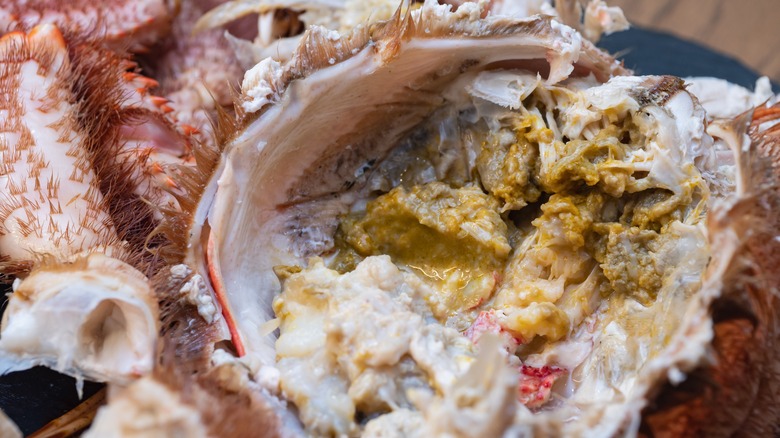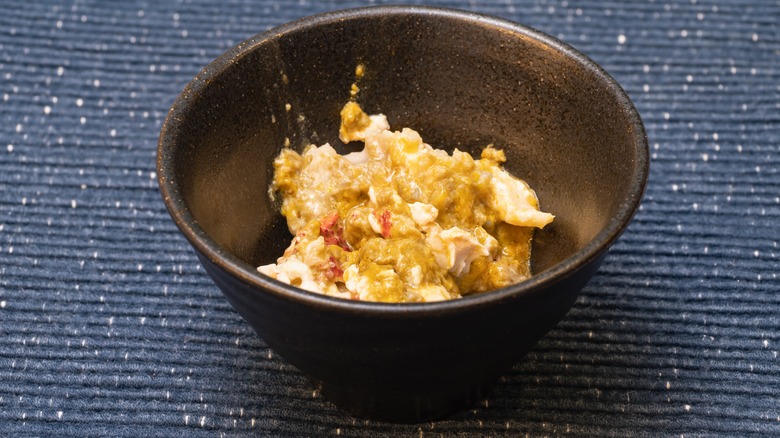No, The Yellow Stuff That Seeps Out Of Crab Isn't Actually Mustard
Crabs, when they're served with their shells on, make for a delicious but very messy eating experience, one that may involve tools that seem like they were sourced from a hardware store such as wooden mallets and leg crackers that closely resemble pliers. Once you breach the exoskeletal barrier, though, chunks of sweet crab meat aren't the only thing you're going to encounter. There's also going to be a big blob of a yellowish goo that many call mustard due to the obvious resemblance, although of course, anyone over kindergarten age is unlikely to believe that crustaceans are really capable of producing the actual condiment itself.
The mustard-like substance inside a crab is actually its hepatopancreas, which is a digestive organ. It works to filter the blood circulating through the crab's body, serving a similar function to a human liver. It also acts in a similar fashion to a human pancreas by releasing digestive enzymes that can break down the toxins that are caught by the filter. As the word hepatopancreas doesn't roll trippingly off the tongue, this yellowish stuff is often known by various nicknames. While some people do, in fact, call it mustard, there are those who (erroneously) call it crab fat while still others prefer the term tomalley. Lobsters, too, have a similar substance inside them, although theirs resembles a greenish goo more so than it does mustard.
Is crab mustard edible?
Unlike various other viscera found inside a crab such as the spongy "dead man's fingers" that are actually lungs, crab mustard is quite delicious and is used as an ingredient in many recipes. Cat Cora makes a Dungeness crab "buon Natale" with tomalley sauce, while in Japan, "kani miso," as it's called, is used in sushi. Swan Oyster Depot, a San Francisco seafood restaurant loved by the late Anthony Bourdain, served up a dish of Dungeness tomalley that was said to be a favorite of his.
That being said, safety-minded cooks often discard the tomalley instead of eating it because its filtering function indicates the presence of toxins. Both New Jersey's and New York State's health departments recommend that every trace of tomalley be removed from blue crabs before you eat them as the latter explains that this organ may have a high concentration of dioxin, toxic metals, and PCBs (polychlorinated biphenyls). The Agency for Toxic Substances and Disease Registry has also advised against eating this part of the blue crab when waters are contaminated but says if you must have crab mustard, you should eat no more than two crabs per day. Even Dungeness crabs, too, have their issues. In 2021, the California Department of Public Health advised against eating any guts from crabs caught along its coast. So should you take the risk and enjoy tasty tomalley, or play it safe and scrape it into the trash? The decision is ultimately up to you.

